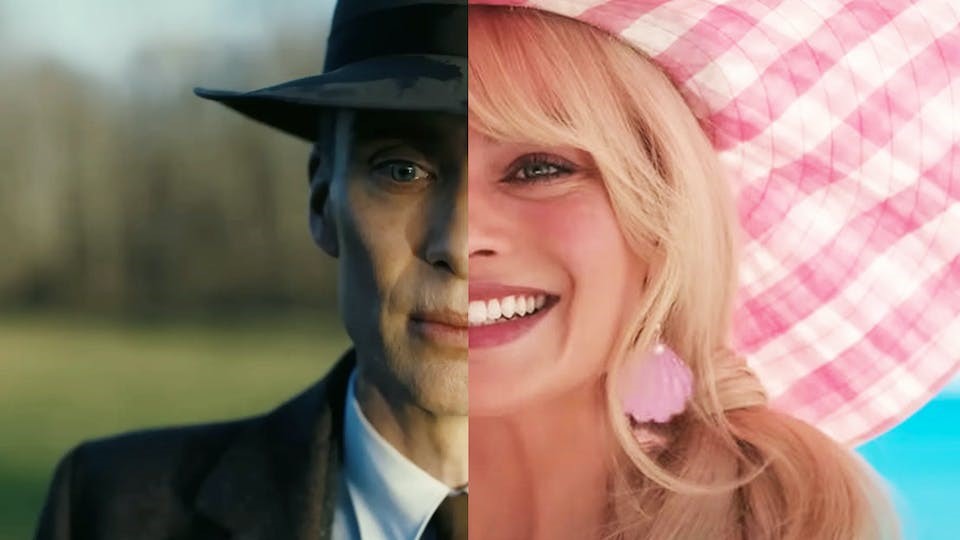
The phenomenon of the internet crashing onto a generation of a long-lost society that is just beginning to embrace globalisation has been fascinating to observe, especially from an outsider’s perspective. I’m of course talking about the Nepali adoption of the internet and its culture as a whole. And what better way to explore this than by delving into the current scenario of Barbenhimer as an anecdotal example?
What is Barbenhimer?
One has surely come across the term, Barbenhimer. But perhaps, you may have lost out on certain Gen-Z online trends if you don’t know what “Barbenhimer” is. Though, it’s very likely that you’re already familiar with Barbie and Oppenheimer, which are presently playing in theatres.
Two completely and erratically different movies; from genres to themes to characters, but what arguably makes them similar is the directorial genius behind it all. But, this article will not explore the genius of the directors or the artistic approach rather; this article will talk about the trend they have set on a global culture of the internet which has somehow found its way to impact Nepal as well.
Trends on the Internet

From countless reels to the impact of meme culture, Barbenhimer has created a buzz of appealing cinema around it, even six months before its release. Something we have never seen. Although cinephiles may argue about the rollout behind the release of the Avengers movie, one thing is of no doubt.
The scale of attention, attraction and retention these two vastly different movies have created is something the world of cinema and the world as a whole has not seen in a long time.
And, as the world of the internet, is not two, three, but one. A singular society functioning with similar trends. Nepal, as one of those countries living in that exact world of the internet, saw the trend’s impact as well.
From Oppenheimer admirers watching movies wearing a suit to Barbie lovers wearing all pink, all for the admiration of movie culture and meme culture, Nepal through this trend, saw something it had never seen before; not of this extravagance at least.
Artistic approach Vs culture

What Nepal saw was a clash of worlds. And, the biggest clash between these two societies was not acceptance, rather; it was a question of freedom, art, and what our Nepali culture represents as a whole.
To stem down and explain this exact culture clash, one can look no further than the ‘nudity debate’ that happened. Though this debate is not just about Nepal, it is about every other country that holds dear to society’s norms. India, the Middle East, and South Asia, all have decided to censor the nudity in Oppenheimer.
To not show nudity in movies, to not show vulgarness or brutality, (and if one is to take it a little too far), to not show any sort of a ‘devilish figure’ in their screenings, (China, does not allow any movies to have a figure of ‘Devilish Appearance’ in the movies they screen), is a choice the country’s screen board makes, of course influenced by the local culture.
All of this does make sense, and all of this does come from the idea of protecting culture, and people. As movies have always been more than just movies. They have been a narrative. They have been an idea, a new person’s visuals. A story of difference and meaning (and again, if one is to take it a little too far), movies have always been a sort of propaganda- an agenda.
About the censor
The Film Development Board (FDB) along with the Film Censor Board (FCB) of Nepal this time, did not decide to ban a movie with nudity together, rather what they did was more abrupt and controversial.
All of the screenings in the Nepali cinema halls, following Film Censor Board’s advice, have now decided to cut out every scene with nudity in it. Completely and utterly blank scenes, with no sounds and no images. If you thought why your screening of Oppenheimer had very weird and abrupt cuts in between, well here’s your reason.
Is Nepal ready?

Despite this scene having a huge impact on the thematic and character growth of Oppenheimer as a character, and despite the nudity being used for an artistic storytelling approach, the Film Censor Board’s cutting of the scene altogether has not been appreciated by moviegoers and the world of the internet.
And so, a question arises. A question about the Nepali culture of movie watching and the internet’s culture of acceptance and artistic approaches; can these two things, cope and live with one another in the same world?
And, can the internet culture and the Nepali culture coexist, with the satisfaction of both those worlds? Through this controversy and through this moment, a clash is born and a clash is seen.
A clash that would probably remain for some generations yet to come. A clash that perhaps shows that a country such as Nepal is not ready to admire art in its full form, and perhaps it never will be.
To take it further through an optimistic lens, a clash that shows that through these conversations we have, and through the impact we create; one day, art in its full form, will be something we can set out, and admire, as not just a people, but as a society.
And, through acceptance and time, the world of the internet and the societal culture of Nepal will find a way to co-exist, with one another. But, as of now, the present is bleak.


















